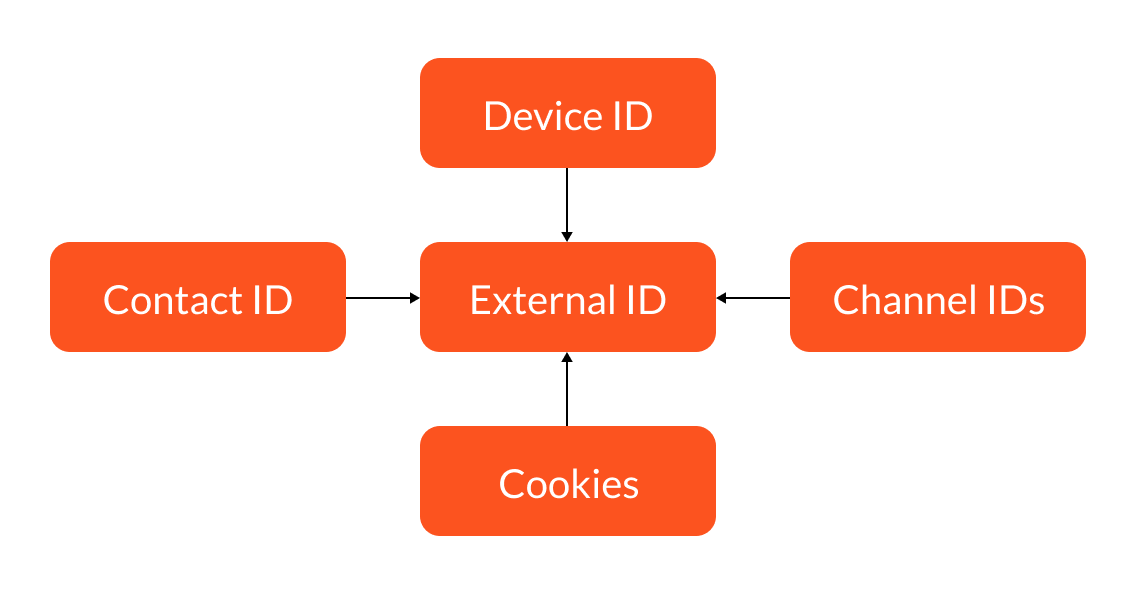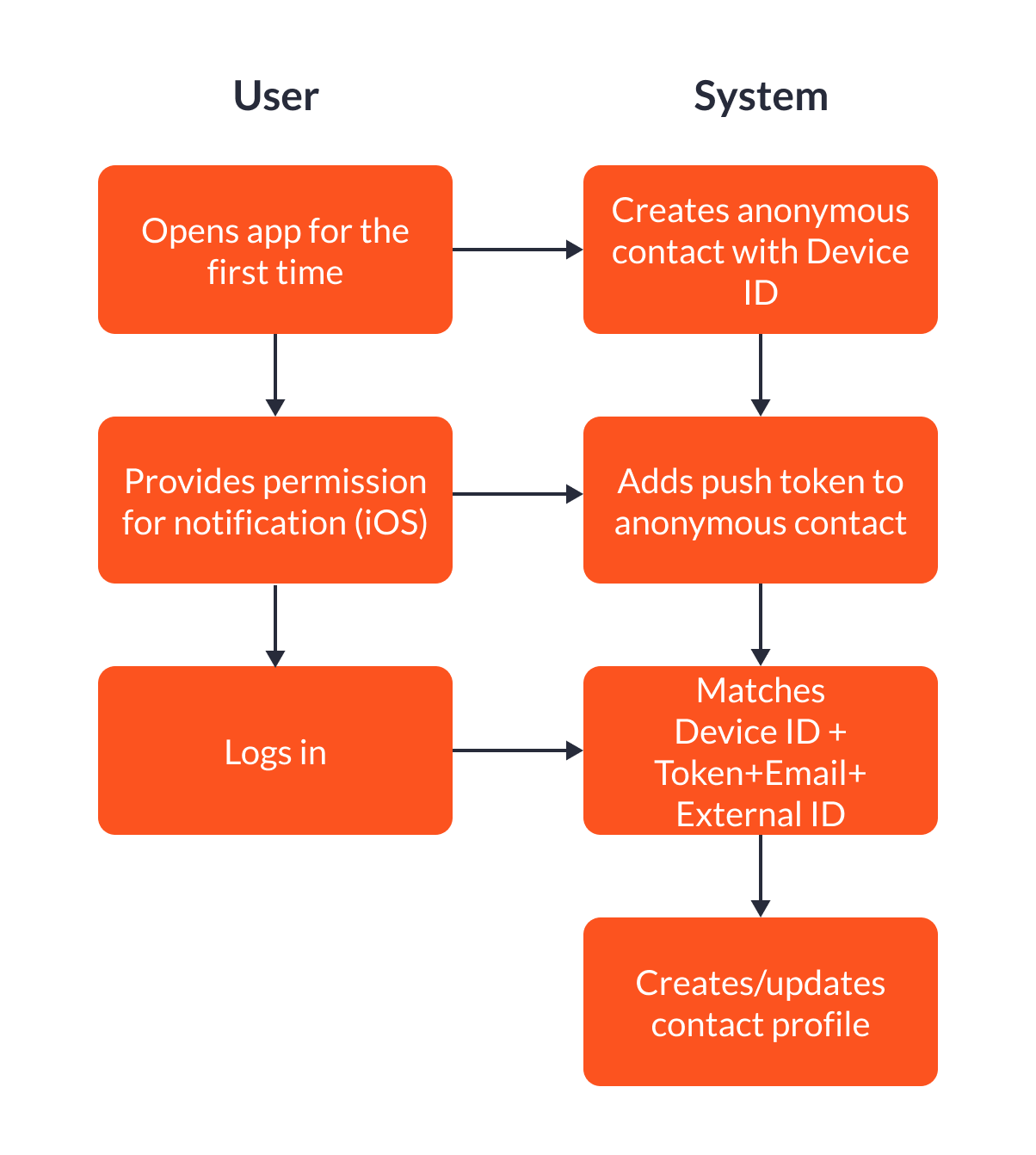Contact Identifiers and Matching
Contact identifiers are used to recognize and track each user uniquely across various touchpoints. Matching these identifiers ensures that all user data is accurately consolidated into a single profile, allowing seamless communication, precise targeting, and effective campaign execution.
Proper identification of your users prevents the creation of duplicate profiles. You can be sure that your message will be received by the exact user it is intended for, even when they log in from different devices.
Let’s look at the contact identification and matching process in Reteno.
Contact Identifiers in Reteno
Reteno allows the following contact identification:

- External contact ID is a unique identifier assigned to a contact (or user) within your internal data management system (your User ID). You have complete control over it, and this is the most important contact identifier for Reteno. If you go a little bit more technical, it serves as a primary key in your contact database. So we guarantee that you will never have two users with the same External ID.
External ID connects in the contact profile all available contact identifiers listed below.

NoteSee use cases in the link to better understand how to optimize contact identification.
- Device ID is the mobile app user's device identifier, which is automatically tracked by SDK. For iOS, it is identifierForVendor , and for Android, it is Android ID . We also allow you to set custom Device IDs; you may use this option when integrating with the Amplitude analytical platform.
Device IDs are used to send In-App and App Inbox messages.
NoteWhen bulk uploading contacts, there is no need to transfer Device IDs and push tokens. When users open your app, we’ll get them through the SDK.
- Сontact ID. It is a unique internal contact ID in Reteno, automatically provided to each contact when imported into the system or created via SDK/API.
- Channel IDs:
- Email, Mobile phone number (you must send it to Reteno via API/SDK),
- Mobile and Web push tokens (collected automatically if the corresponding functionality is enabled).
- Cookies. Those are small files containing blocks of data created and used by web servers to store stateful information on the user's device or to track their browsing activity.
Before receiving unique External IDs, users must be identified:
An identified user is someone who provides identifiable information, such as email or phone number. Identifying occurs through an event like signing up, logging in, or providing personal details. An identified user must have an External ID + email/phone number.
An anonymous user is a person who uses a mobile app or interacts with a website without providing identifiable personal information, such as a name, email address, or phone number. They are tracked using device IDs or web cookies.
In this documentation , you will find detailed information on how to set the user ID.
Contact Lifecycle
There are three ways of creating contacts:
- Bulk upload
- API request
- SDK
When a user opens your app for the first time, SDK creates the anonymous contact with the Device ID. When the user logs in to the app, you must send the updateUserAttributes request with the External ID. This request creates a user profile or updates it if such an External ID already exists in Reteno.

NoteA Device ID and a mobile token may belong only to one contact. When user data is updated through SDK by External ID and the system finds the Device ID and the mobile token belonging to another user, this Device ID and mobile token migrate to the updated user. One user could have several Device IDs and mobile tokens.
Updated 4 months ago
